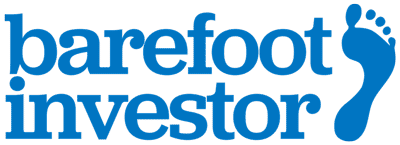How to save $83,913 on your home loan
Picture this: You walk up to your car and notice you’ve copped a parking ticket.
Bastards!
You swipe the ticket off your windshield and almost fall over. A $500 fine!
WTF?!
If you’re like most people, it’d give you the Kevin Rudds for the rest of the day. It might even cause you to bang off an angry email to the council and try and get out of it (or threaten not to pay it).
However, when your friendly Westpac banker decides to hike your home loan upwards of $500 a year — every year — you simply shrug your shoulders and cop it.
What are you going to do? They’re bastards. Right?
Actually, when you look beyond the screaming bank-bashing headlines and view the issue like an adult, Westpac’s hike makes sense.
After all, the Australian economy needs strong, profitable banks. Thankfully, we’ve got some of the strongest and most profitable in the world.
But we’ve also got some of the greediest banks in the world.
In the last 12 months the Big Four have pumped out around $30 billion in profits. They’ve achieved this record-breaking haul by doling out a record amount of debt, to the point that Aussie households are some of the most heavily indebted on the planet.
So, as a precaution, the government regulators are forcing the banks to put aside more capital for when the downturn comes. As they should.
Faced with this, the banks had a choice: they could either take their lumps and reduce their record profits … or shake down their customers for more money.
Shake, shake, shake.
Really, it was a no-brainer for Westpac (and the other three, who will surely follow suit and raise their rates). The bank has clearly done its numbers, and they’re convinced you’ll cop it on the chin.
The truth is, it’s much easier to bitch than it is to switch.
So let’s talk about that.
Westpac’s current standard variable rate sits at 5.68 per cent.
(Bear in mind that the only ‘standard’ thing about a standard variable rate is that no-one actually pays it. Think of it like the price scribbled on the windscreen in a used car yard: it’s marked up so it can be marked down.) So it’s more likely the average Westpac customer is paying around 4.78 per cent.
Now, it costs your bank about $1,000 in marketing costs to replace you (and about six times that amount if you come via a mortgage broker they pay kickbacks to).
That’s your negotiating power right there.
Now here’s how to use it.
On your way home from work tonight, ring Westpac (it works for every other bank too) and say this:
“I’m mad as hell with you guys. I’ve decided to move my business over to UBank, where they’re offering me a variable rate at 3.99 per cent. I know they don’t have an offset account, but I’m happy with that. I’ve completed the online application, so can you please tell me what steps I have to do to move across my mortgage?”
This is a bluff, of course.
Yet the bank’s sales team have strict targets (backed by incentives) that they have to meet — one of which is retaining profitable customers by giving them discounts to keep their business (hey, there’s always a chance of flogging you some insurance later, right?). Over the years I’ve had plenty of readers do this exact negotiation on the way home from work, and in almost every case they’ve reported back that they’ve saved themselves a huge amount of money.
So let’s talk about what it could mean for you: if you were to move from your $500,000 mortgage to NAB’s Jetstar-styled bank brand UBank (which I have absolutely no association with), you’d save yourself $83,913 in interest over the life of the loan. Bugger the parking ticket — that’s enough of a saving to buy you a brand spanking new Mazda 3, with 20 years’ worth of free petrol and parking!
But you won’t do it, will you?
Tread Your Own Path!
Reminder: I first wrote about this years ago and highlighted the low fees. Today there are better bank accounts on offer. How do I know? Because my readers constantly email me about them! So before you do anything, google the best accounts on offer now.
The Riddle of the Next Rate Cut
The Reserve Bank is almost certain to cut rates once in the next 12 months.
Why?
Because they want to push down the Aussie dollar to help us be more competitive on the world stage (and obviously to mess with all the teenagers buying Taylor Swift merch from the US).
So if I look at my (cloudy) crystal ball, I can foresee the banks following Westpac’s lead, and raising rates in the next few weeks — just in time to pass on some of the Reserve Bank’s cut. In other words, just because the Reserve Bank may deliver a rate cut — that doesn’t mean it’s going to end up in your pocket.
So I know what you’re thinking: if the banks are increasing their rates, is now a good time to fix the home loan?
No.
Well, unless you’re on the absolute bones of your backside, in which case you should fix, and pray.
For everyone else, with rates at historical lows, you should treat today as a once-in-a-lifetime opportunity to pay down a huge amount of debt. And you limit your repayment options when you fix your rate. So stay variable, preferably with a low-cost home loan under 4 per cent.
